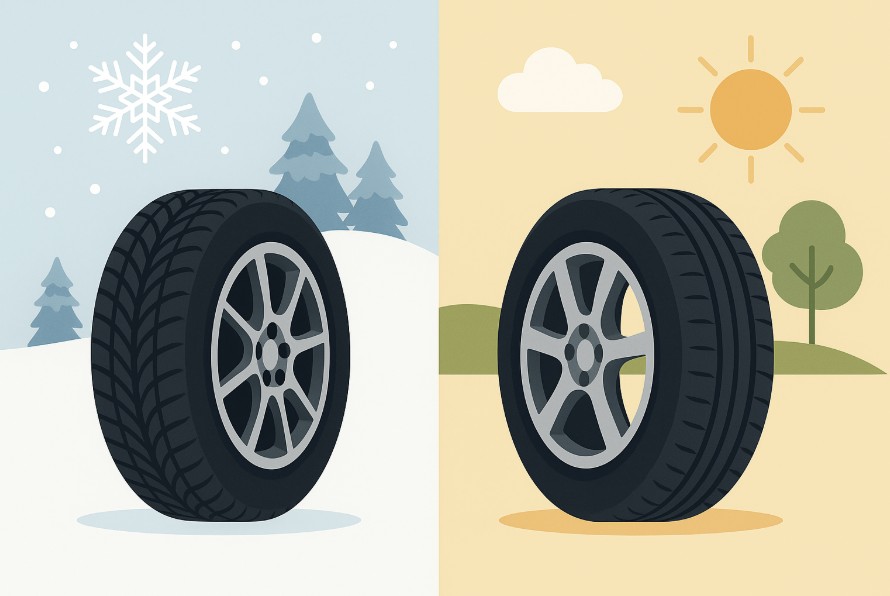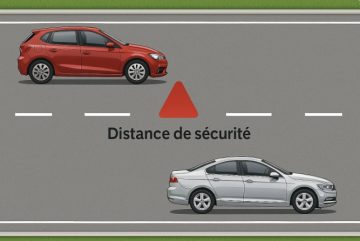🌨️ Summer, Winter or All-Season Tyres: Which Ones Keep You Safe (and Fine-Free)?
❄️ 1. Safety Comes First
Changing your tyres isn’t just about comfort — it’s about safety and sometimes legal responsibility.
Every autumn, the same question arises: Should I switch to winter tyres?
In Belgium, the law doesn’t require it, but common sense and caution certainly do — especially when temperatures drop below 7°C.
⚖️ 2. What Does Belgian Law Say?
➡️ In Belgium, winter tyres are not mandatory.
However, they are strongly recommended once the temperature falls below 7°C.
🔹 There is no legal period during which you must fit or remove them.
🔹 The choice of tyre therefore depends on the driver’s responsibility.
🧠 Good to know: in the event of an accident on snow or ice, a judge may find that a driver using summer tyres failed to take reasonable precautions, even without breaking any traffic law.
🌍 3. Travelling Abroad? Rules Differ Across Europe
Belgium’s neighbours often have stricter rules. Here’s a quick overview 👇
| Country | General Rule |
|---|---|
| 🇩🇪 Germany | Mandatory in winter conditions (snow, ice, frost) |
| 🇱🇺 Luxembourg | Mandatory whenever there’s snow or ice |
| 🇦🇹 Austria | Mandatory from 1 Nov. to 15 Apr. in winter conditions |
| 🇫🇷 France | Mandatory from 1 Nov. to 31 Mar. in mountain regions |
| 🇨🇭 Switzerland | Not mandatory, but fines possible if your vehicle is unfit for winter roads |
🚗 Before driving abroad, always check the local tyre laws — forgetting could lead to a fine or insurance complications if an accident occurs.
⚠️ 4. In Case of an Accident
Even though winter tyres are not legally required, your choice of tyre can have serious legal and insurance implications:
💡 If you cause or are involved in an accident on icy roads with summer tyres:
-
your insurer may claim gross negligence and reduce or refuse compensation;
-
a court may find you at fault for failing to take adequate precautions.
👉 In short: choosing suitable tyres means fewer risks and fewer disputes.
🔍 5. Summer, Winter, or All-Season Tyres?
| Type | 🌡️ Ideal Temperature | 🧭 Grip | 🚙 Best For |
|---|---|---|---|
| Summer | Above +7°C | Excellent on dry or wet roads | March to October |
| Winter | -7°C to +7°C | Best on snow, ice, and cold roads | November to March |
| All-Season | Year-round | A balanced compromise | Suitable if winters are mild |
🔸 Winter tyres can be recognised by the M+S (Mud & Snow) and 3PMSF (Three Peak Mountain Snowflake) markings.
Only the 3PMSF symbol guarantees compliance with EU winter performance standards.
🧰 6. Practical Tips
✅ Plan ahead: switch to winter tyres around mid-October.
🏠 Store your tyres in a cool, dry place away from sunlight.
🧾 Check tread depth: the legal minimum is 1.6 mm, but 4 mm is recommended for winter tyres.
📍 Check before you travel abroad.
💸 Fines: up to €135, depending on the country.
🧑⚖️ 7. In Summary
Even without a legal obligation, winter tyres are often the safest and smartest choice when temperatures drop.
In the event of an accident, your conduct will be assessed according to that of a careful and reasonable driver.
👉 It’s simple: better safe than sliding.
💬 8. Need Legal Advice After an Accident or Insurance Dispute?
I can help you:
-
challenge an insurance decision,
-
assess liability, or
-
defend your rights after a winter road accident.
📞 Contact me for clear, practical, and human legal advice.




